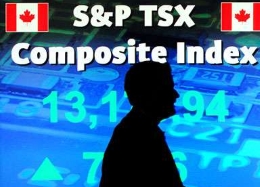Full Guide to S&P/TSX Composite Index
Based on data from the TSX (Toronto Stock Exchange), the S&P/TSX Composite Index is the Canadian equity market’s primary index. Measuring the performance of stocks representing 10 business sectors in Canada, this index covers the utilities, telecommunications, materials, IT, industrials, healthcare, financials, energy, consumer staples and consumer discretionary industries. The S&P/TSX Composite Index is the Canadian equivalent of the USA’s S&P 500 market index, and it contains both income trust units and common stock. Since it was first introduced, the S&P/TSX index has been composed of 200–300 top Canadian stocks, although the number of stocks represented in this index varies from time to time. The index’s ticker symbol is SPTSX, and it has over 1,500 companies listed, which represent over US$2 trillion in total market capitalisations.
The Toronto stock exchange is Canada’s largest in terms of market capitalisation, as well as being the third biggest on the North American continent and the eighth biggest worldwide. The S&P/TSX Composite Index is the broadest of all of the indices in the S&P/TSX family, and it therefore forms the basis for numerous sub-indices such as income trust indices, equity indices, capped indices, GICS indices, market cap-based indices and capped indices. Both historical and real-time data for this index is distributed by the Toronto Stock Exchange. The S&P/TSX Composite Index is more closely correlated to fluctuations in commodity pricing than its United States counterparts, as the Toronto Stock Exchange is heavily dominated by commodity stocks, and especially crude oil because of Canada’s vast natural resources. It covers around 95% of Canada’s equity market, and serves the dual purpose of acting as an investable index as well as a benchmark for the health of the Canadian economy. It is designed to represent a broad benchmark index, while at the same time keeping all of the liquidity characteristics found in narrower indices, and this combination makes the S&P/TSX Composite Index the ideal choice for index replication and portfolio management.
| Broker | Bonus | More |
|---|
Historical Facts About the S&P/TSX Composite Index

Criteria for Listing on the S&P/TSX Composite Index
In order for a security to be eligible for inclusion in the S&P/TSX Composite index, it must meet several different criteria. These include the following:
- The security must represent a weight of at least 0.05% of the index after the QMV (Quoted Market Value) of the security has been included in the index float capitalisation when based on the VWAP (Volume Weighted Average Price) noted over the last 3 trading days of the end of the month before the quarterly review takes place.
- The security must have a VWAP of at least CA$1 during the previous 3 months, and over the final 3 trading days of the month end before the holding of the quarterly review.
- The liquidity of the security must be 0.50 when measured by float turnover (i.e. the total amount of shares that have been traded at all trading venues in Canada over the last year divided by the float-adjusted shares remaining outstanding when the period comes to an end).
- The company should be either established, formed or incorporated in Canada, and the Toronto Stock Exchange must be the primary stock exchange for its listing.
There are some kinds of securities that are not eligible to be included in the index, including the following:
- Preferred shares
- Securities that represent mutual fund corporations
- Exchangeable shares
- Instalment receipts
- Warrants
- Any other securities that have been deemed as inappropriate at a meeting of the index committee.
The S&P/TSX Composite Index has a rule that restricts any component’s weighting to a maximum of 10%, regardless of its market capitalisation.
Companies Listing on the S&P/TSX Composite Index
Many of Canada’s best-known companies are represented on the S&P/TSX Composite Index. Of the 10 sectors represented, the one with the biggest weighting is the financial industry at around 35%, with energy coming in second at about 21%. Currently, the sector with the lowest weighting is the healthcare industry, which has a weighting of less than 1%. The top listings of the S&P/TSX index currently include
- The Royal Bank of Canada
- The Toronto Dominion Bank
- The Bank of Nova Scotia
- Suncor Energy Inc.
- Canadian National Railway Company
- Bank of Montreal
- Enbridge Inc.
- BCE Inc.
- TransCanada Corporation
- Canadian Natural Resources Ltd.
Other educational materials
- FTSE AIM All-Share Index
- FTSE All-Share Index
- Japanese Exchange Group (JPX)
- LSE – London Stock Exchange
- NASDAQ
- New York Stock Exchange (NYSE)
Recommended further readings
- The ethical mutual fund performance debate: New evidence from Canada. Bauer, R., Derwall, J. and Otten, R., 2007. Journal of Business Ethics, 70(2), pp.111-124.
- Financial Conditions Indices for Canada. Gauthier, C., Graham, C. and Liu, Y., 2003. Bank of Canada. Photocopy.


